

Some exploration of Green Connexion
[supsystic-gallery id=4 position=center]
 Le projet hydroélectrique de Nachtigal Amont (420 MW), qui comprend la construction de barrages en béton compacté au rouleau (BCR), d’un canal usinier, d’une centrale hydroélectrique dotée de sept groupes de 60 MW et d’une ligne d’évacuation d’énergie jusqu’à Yaoundé, se situe sur le fleuve Sanaga à 65 km de Yaoundé.
Le projet hydroélectrique de Nachtigal Amont (420 MW), qui comprend la construction de barrages en béton compacté au rouleau (BCR), d’un canal usinier, d’une centrale hydroélectrique dotée de sept groupes de 60 MW et d’une ligne d’évacuation d’énergie jusqu’à Yaoundé, se situe sur le fleuve Sanaga à 65 km de Yaoundé.
Ce projet stratégique pour l’Etat du Cameroun est développé par une société projet camerounaise, Nachtigal Hydro Power Company (NHPC), donc les actionnaires sont EDF International, l’État du Cameroun et la Société Financière Internationale, qui s’est fixée pour ambition de se conformer aux meilleures pratiques nationales et internationales en matière environnementale et sociale, d’aménagement hydraulique et de construction d’infrastructures.
Green Connexion et ses membres à l’NHPC pour la journée Mondiale de la Biodiversité
[supsystic-gallery id=3 position=center]
Preasious Forbi, Marlène Ngansop T., Mireil Tchoupou V., Eric Ngansop T. & Jean-Paul Ghogue (May 09th 2017).
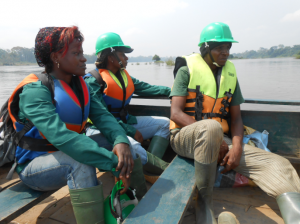
The Green Connexion team during a survey on the Sanaga River. Photo@greenconnexion. 2015.
In Cameroon, we are currently working in the domain of conservation of freshwater plants in the Sanaga, Nyong, Mbam, Ntem and Djikem rivers. We focus mainly on the protection and conservation of plants directly threatened by the construction of retention or hydroelectric dams.
In the Sanaga River, in contract with the Nachtigal hydroelectric project since 2015, we are trying to save from extinction the plants Ledermanniella sanagaensis (CR= Critically Endangered of extinction) and of the Nachtigal falls where the Nachtigal dam will be constructed, Ledermanniella thalloidea (EN= Endangered of extinction) both species belonging
We are carrying out the same work as for the Mbam in the Djikem River which flows into the Sanaga River around Mbandjock.
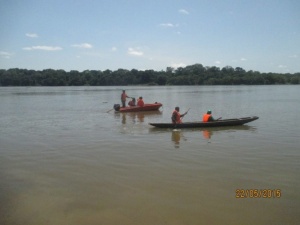
The Green Connexion team on the Nyong River waterfalls at Dipippy. Photo@greenconnexion. 2016.
The Nyong is the second largest river in Cameroon after the Sanaga. Under a sub-contract with Oréade-Brèche working for the Platinum Power company, Green Connexion in 2016 carried out in the above river a short inventory of all freshwater aquatic species and the results showed that it contains many important species from a conservation point of view because they are threatened at different levels. We can cite the following examples: Saxicollela nana (endemic to the Nyong River) and Ledermanniella boumiensis all two (VUD2), Ledermanniella schlechteri, Ledermanniella
bifurcata and Macropodiella heteromorpha, all three (VU B2ab(ii,iii)) and Impatiens letouzeyi (EN).

The Green Connexion team during a mapping mission on the Ntem River. Photo@greenconnexion. 2015
Compared to the Sanaga River currently, the Nyong River remains relatively less perturbed. For all projects on this note, the examples of the threatened plants listed above show the importance of the conservation initiatives of freshwater aquatic plants at the base.
Generally, when a big project is carried out on a big water course, even with a good will, in situ conservation actions (on the project site) are often difficult and costly. In this context, the transplantation (removing the threaten species and plant them somewhere else), the search and the conservation of new populations are often envisaged as the best alternative.
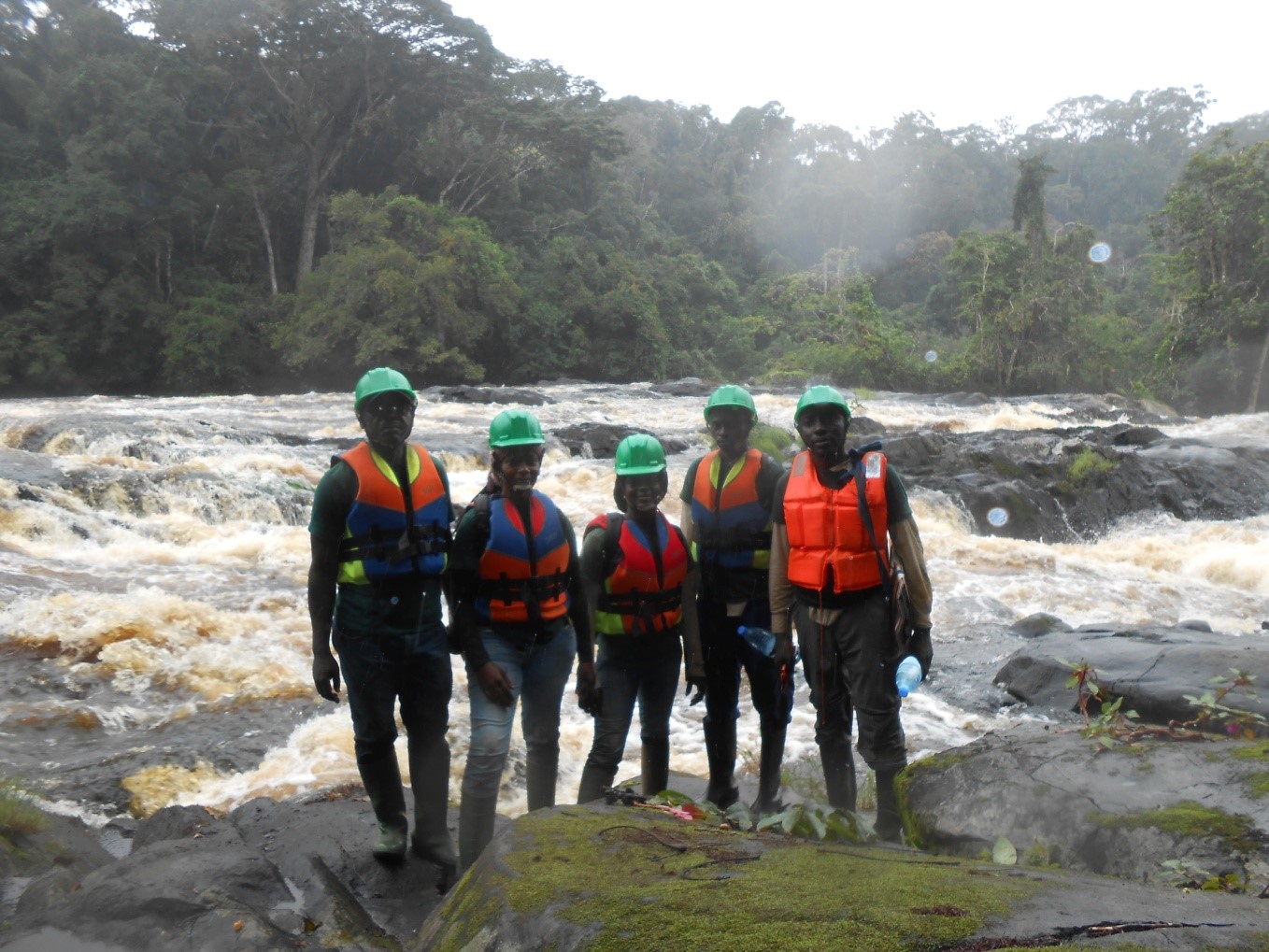
The Green Connexion team during a water sampling on the River Dibang. Photo@greenconnexion. 2014.
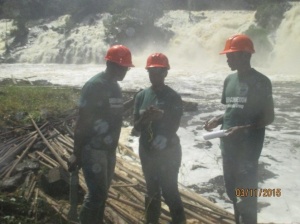
The Green Connexion team during an inventory on the River Ntem’s waterfalls. Photo@greenconnexion. 2015.
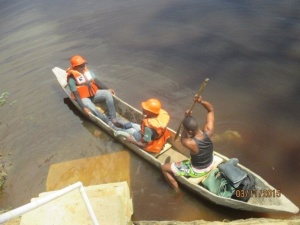
The Green Connexion team during a crossing of the Biwomé River. Photo@greenconnexion. 2015.
However, most freshwater aquatic plants are very eye-catching in terms of the physic anc chemical conditions of the milieu. To guarantee a chance of success to a possible transplantation, the conditions in the source medium should be close to, if not identical, to those in the host medium.
From 2014-2015, under the financing of the Rufford Small Grants, we studied the physico-chemical conditions of water in the Sanaga River at Nachtigal, and at Edéa, and then compared them to those of waters from the Afamba, Mbam, Kelle, Nyong, Dibang, Lep Riton and Ngwei rivers.
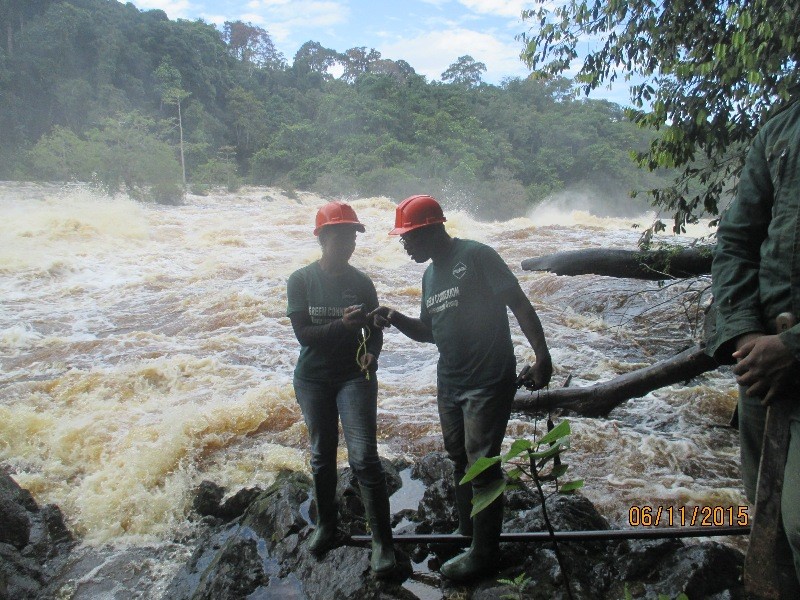
The Green Connexion team during a mapping mission on the Ntem River. Photo@greenconnexion. 2015
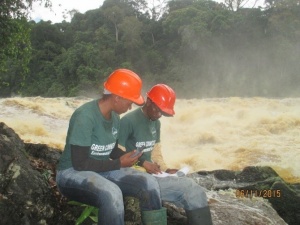
The Green Connexion team during notes taking on the Ntem’s riverside. Photo@greenconnexion. 2015.
Statistically, the physico-chemical characteristics of the Kelle and Lep Riton rivers were closer to those of the Sanaga River at Edéa and at Nachtigal.
Due to this fact, these two rivers constituted the best sites for the potential transplantation of endemic Podostemaceae from the threatened sites of Edéa and Nachtigal. However, these two rivers are not tributary to the Sanaga River. Taking into consideration the size and parental link with the Sanaga River, the Mbam river was also retained as a site for eventual transplantation.
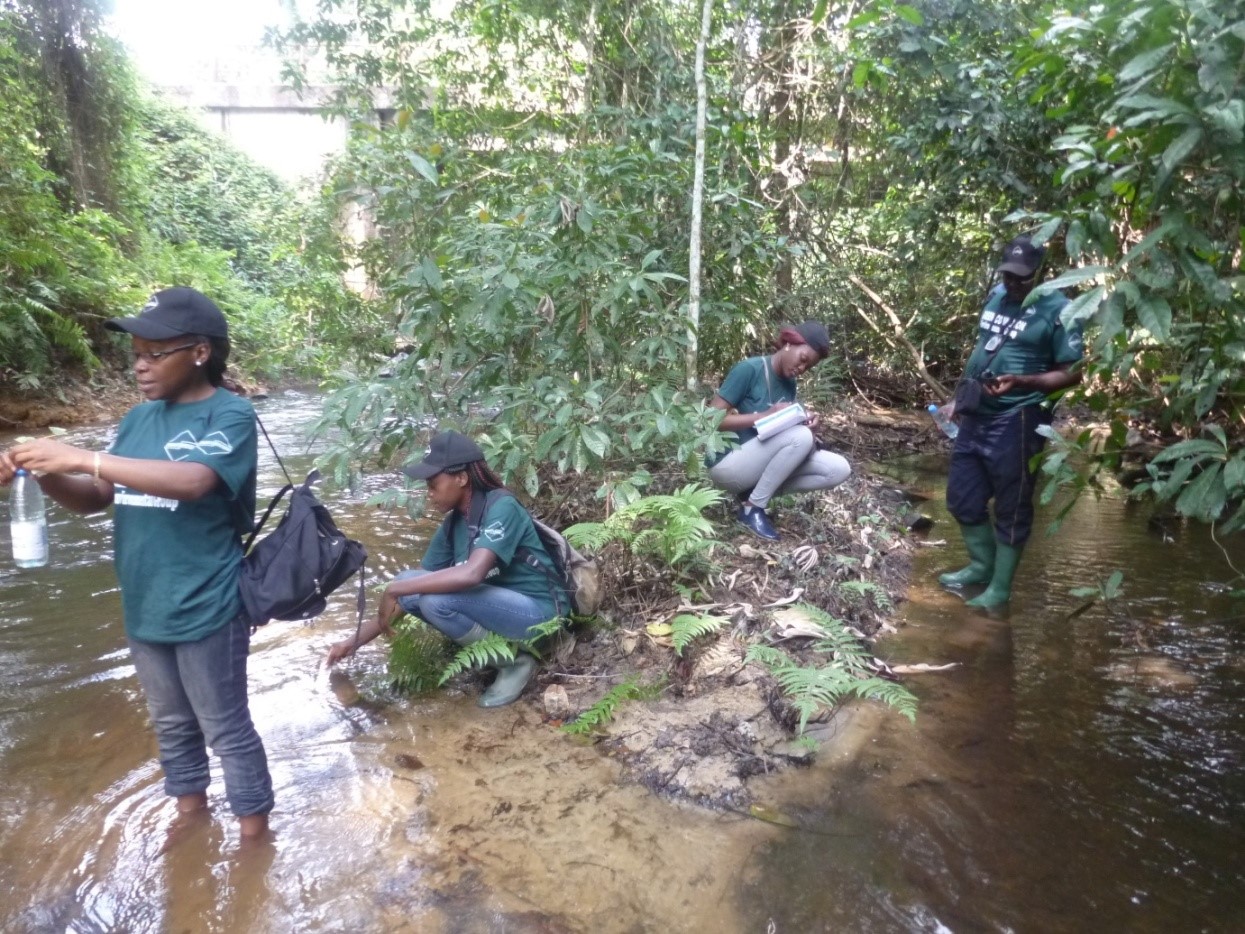
The Green Connexion team during a water sampling on the River Dibang. Photo@greenconnexion. 2014.
Cameroon has many dams. Actions to conserve freshwater aquatic plants in the watercourses where these dams are built are, if non-existent, but
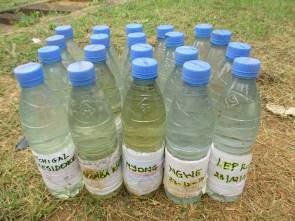
Echantillons d’eau
diverse and isolated. Yet a watercourse holds in all. When several dams are built there, their conservation actions must be concerted and coordinated. In the near future, we envisage,
together with the Cameroon Ministries of Water and Energy, Environment and Nature Protection, IUCN and all stakeholders in the field, the creation of a common platform for reflection and exchange on actions that favor the conservation of freshwater biodiversity in the major rivers of Cameroon.
Marlène Ngansop, Preacious Forbi & Jean-Paul Ghogue.
Green Connexion (May 04th, 2017)
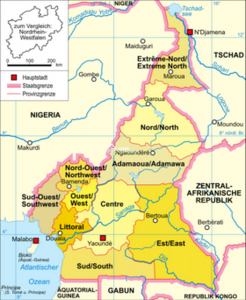
Localization of River Sanaga in Cameroon. Source: Wikipedia
The Sanaga watershed, evaluated at 133.000 km2, occupies the Central part of Cameroon in the forest-savannah contact zone and is located between
latitudes N3o22’ and N7o22’, and longitudes E 9o45’ and E 14°57’ (Kpoumié et al., 2012). From its main sources on the Adamawa plateau to the mouth of the Atlantic Ocean, the Sanaga River flows through four regions of Cameroon namely: the Adamawa, East, Centre and Littoral.
The Sanaga River covers a distance of about 920 km from its source to the Gulf of Guinea with a rate of flow of about 2200 – 3200 m3/s during the high rainy season. Three main divisions are distinguished in the river namely: the upper Sanaga dominated by the Djerem River in Adamawa; the middle Sanaga represented by the Mbam River which originates from the Western Highlands and joins the Sanaga some 80 km upstream from the mouth of the river; and the lower Sanaga which is the lower part after the Edea hydroelectric dam right to the Atlantic Ocean. Several small rivers in the Sanaga basin are tributary to the Sanaga River. The river is rich in waterfalls and rapids. The water bed is rocky in most parts with huge deposits of sand.
Several activities take places in the Sanaga river:
Fishing. The reservoirs are over-fished, often by fishermen originating from other parts of the country and neighbouring countries. In fact fishing is not the main activity of local people of the area. They mostly need the river and its associated wetlands for domestic use and as source of fertilizer for their lands during floods.
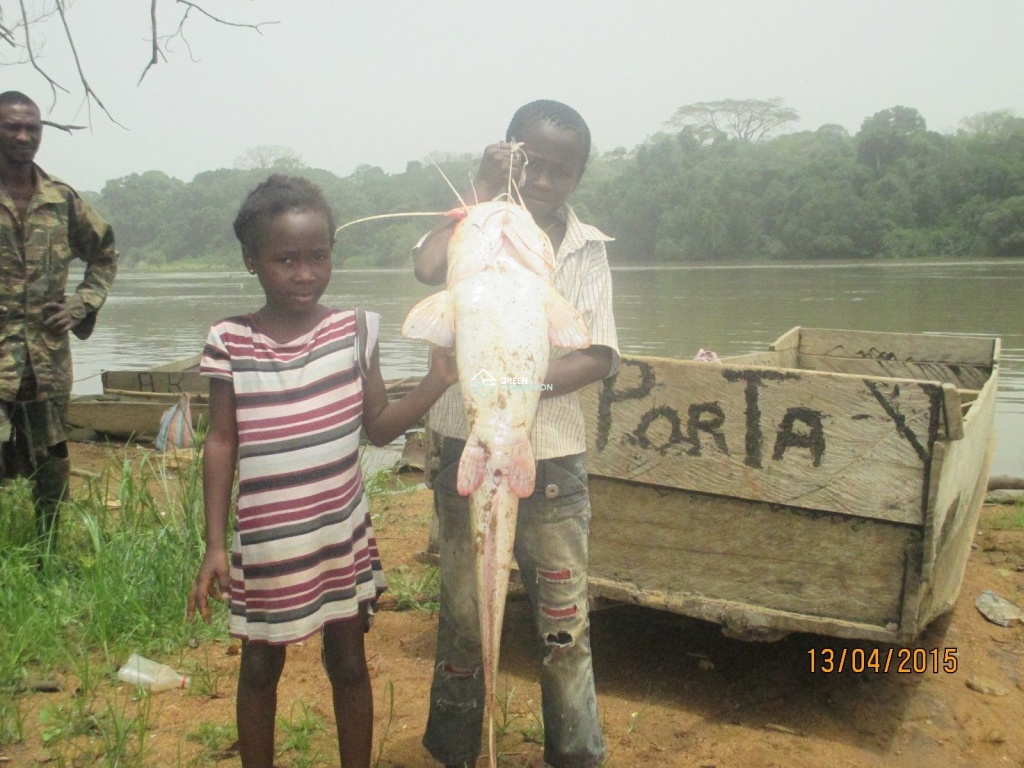
Fisherman and children at the shore of Sanaga River (photo@green Connexion).

Sand collection at the shore of the river
Sand extraction is the most lucrative activities in the Sanaga river basin. Many thousands of “sand fishermen” as they are called can be seen daily diving all along the river, or driving heavy canoes filled with sand or loading lorrys. Many hundreds of lorrys can then be loaded every day on the river’s shore. Adults as well as children take part in this activity.
Because of its important rate of flow, the river is very solicited for dam construction. In fact, throughout the river basin, two types of dams areconstructed: Hydroelectric dams for direct electricity production (Edea, Song Loulou) and detention dams to regulate the flow rate of water in the Sanaga River (Mbakaou, Bamendjin, Mapé and Lom-Pangar). The construction of the Nachtigal dam will start soon while many other dams are planned for this same river.
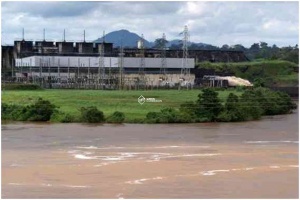
Edea hydroelectric dam. Photo@ Green Connexion
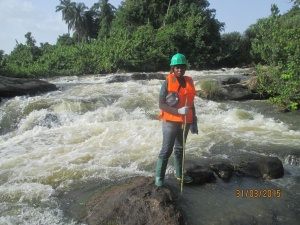
Nachtigal rapids on the Sanaga River. Photo@Green Connexion
The Convention on Biological Diversity (CBD) initiated by the United Nations Environment Programme (UNEP) has three objectives: the conservation of biological diversity; the sustainable use of its components; and the fair and equitable sharing of benefits arising out of the utilization of genetic resources. In the Convention’s first Strategic Plan, adopted in 2002, the Parties committed themselves “to a more effective and coherent implementation of the three objectives of the Convention, to achieve by 2010 a significant reduction of the current rate of biodiversity loss at the global, regional and national level as a contribution to poverty alleviation and to the benefit of all life on Earth.” Nevertheless, in 2011, scientific consensus agree there stills a continuing loss of habitats and high rates of extinctions in the world. Unless urgent action is taken to reverse current trends, a wide range of services derived from ecosystems, underpinned by biodiversity, could rapidly be lost.

By decision V/10, the Conference of the Parties (COP) of the CBD decided to consider, at its sixth meeting in April 2002 (Cartagena, Colombia), the establishment of a global strategy for plant conservation (GSPC). The overall purpose of the Strategy is to achieve the three objectives of the Convention, particularly for Plant diversity. In decision VI/9, COP adopted the Global Strategy for Plant Conservation, and invited relevant organizations to endorse the strategy and contribute to its implementation. Parties and Governments were further invited to develop national and/or regional targets and to incorporate these into relevant plans, programmes and initiatives. The Strategy consists of the following five objectives:
By ratifying the Convention on Biological Diversity (CBD) in June 1994, the Government of Cameroon (GoC) recognized that the implementation of the Convention’s provisions could halt and even reverse the loss of biodiversity and degradation of ecosystems for the benefit of Cameroon and the world today and tomorrow. Conservation of biological diversity and sustainable use of its components are not the responsibility of government alone. By involving representatives of different categories of biodiversity stakeholders in the development of the National Biodiversity Strategy and Action Plan (NBSAP), it was recognized that every Cameroonian must feel concerned about biodiversity and that implementation of the NBSAP is fundamental to achieving national development and improving our individual well –being. Cameroonian law No. 96/12 of August 5, 1996 on the Framework Law on the Environmental Management, Title III, Chapter V on the management of natural resources and conservation of biological diversity, Article 62 says: “The nature protection, animal and plant species’ preservation as well as their habitat, the defense of biological balances and ecosystems, the biological and genetic diversity’s conservation against any cause of degradation and extinction’s threat are of national interest. It is the responsibility of public services and every citizen to work on the defense of the natural heritage”.
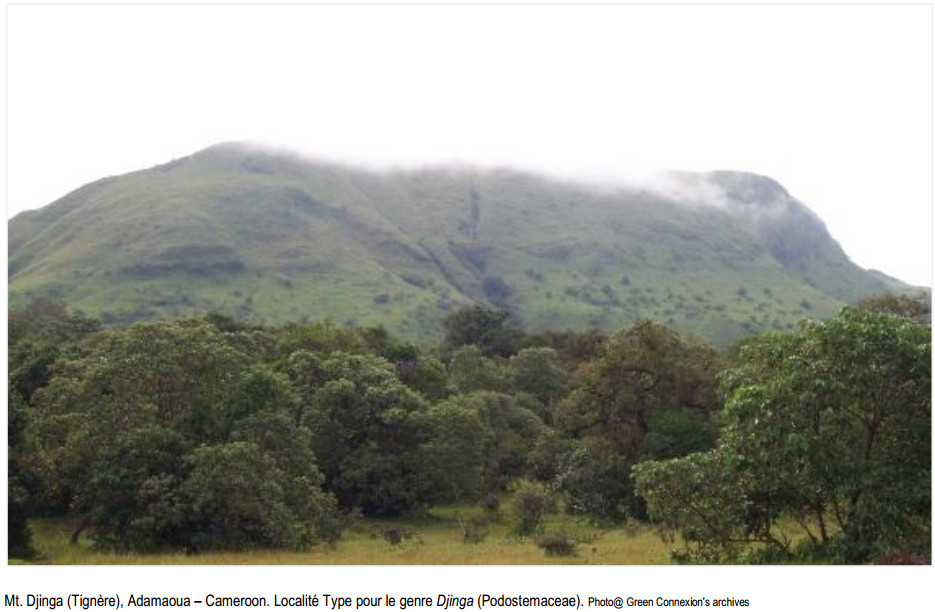
Our Strategy and action plan for plants’ conservation in Cameroon and Tropical Africa.
Green Connexion is an environmental Group, working mostly for plant’s conservation and environmental protection. For biodiversity conservation, its strategy is mostly modeled on that of the Global Strategy for Plant Conservation (GSPC) of the CBD and the National Biodiversity Strategy and Action Plan (NBSAP) of Cameroon. For environment protection, we respect the Cameroonian law No. 96/12 of August 5, 1996 on the Framework Law on the Environmental Management, Title III, Chapter V on the management of natural resources and conservation of biological diversity, Article 62.
1. Regulatory framework.

Green Connexion is a legal organization within the Cameroonian territory. It’s situated in the framework of the GSPC. Following Targets 15 and 16 of Objective V of the GSPC, the Association was created in 2008. Its legalization’s process started in 2010, and the association was signed January 2011. Today, the Association is officially registered under: Association n°00000156/RDA/J06/BAPP du 31 janvier 2011. In fact, Objective V of the GSPC recommends the development of capacities and public engagement necessary to implement the Strategy. Its Target 15 recommends that is put in place sufficient number of trained people working with appropriate facilities, according to national needs, to achieve the targets of the Strategy; and Target 16 recommends that are established or strengthened Institutions, networks and partnerships for plant conservation at national, regional and international levels to achieve the targets of this Strategy. Our immediate goal is to grow and become within the next two years an NGO. To fulfill this goal, we pledge to carry out and make effort to be successful in as much conservation work as possible. Through well targeted communication, GC’s objective is to be as present as possible within the national territory.
2. Research.
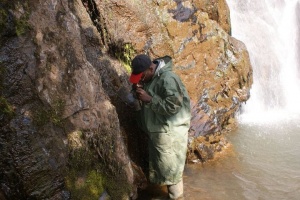
Green Connexion follows objective I of the GSPC. In fact Objective I recommends that “Plant diversity is well understood, Contents 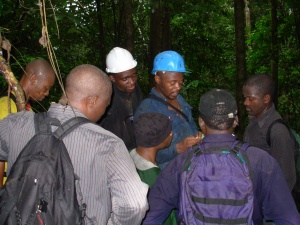 documented and recognized”, and target 1 of objective I recommends the creation of “An online Flora of all known plants”. In this respect, GC is planning to broaden more its expertise in the domain of plant’s science and to open to more collaboration worldwide, especially towards universities and research institutes. GC is a scientific organization. Therefore, its members currently carry out research in various domains: Phytogeography, Systematic, Ecology, Forestry, Chemistry, Ethnobotany as well as Social Sciences.
documented and recognized”, and target 1 of objective I recommends the creation of “An online Flora of all known plants”. In this respect, GC is planning to broaden more its expertise in the domain of plant’s science and to open to more collaboration worldwide, especially towards universities and research institutes. GC is a scientific organization. Therefore, its members currently carry out research in various domains: Phytogeography, Systematic, Ecology, Forestry, Chemistry, Ethnobotany as well as Social Sciences.
Research assistance and collaboration also fall into its priorities. Its activities in this domain are:
GC believes that most of the time, the success of a research’s mission depends on its preparation. The reason is that it’s generally not an easy task to prepare a fieldtrip that will happen in a place where naturally you are not now. GC proposes then to put its field experience at the service of researchers: Research permits’ application, communication, advice, reservation, care taking from the beginning to the end of the mission.
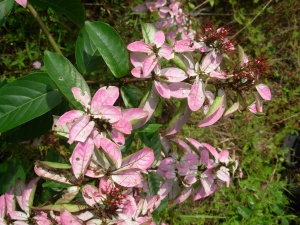
Plants’ collecting and good identification is the first resource of all plant’s professionals (researchers, teachers, town planners, gardeners, 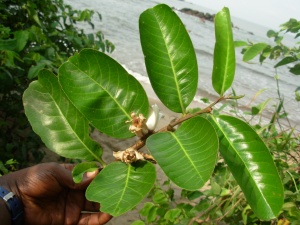 botanists, physiologists, pharmacists, chemists, biochemists, ethnobotanists etc.). When absent, these two aspects can turn a simple research sometime into a nightmare. GC’s members include the best plants’ specialists, who propose to avoid useless lost of time and
botanists, physiologists, pharmacists, chemists, biochemists, ethnobotanists etc.). When absent, these two aspects can turn a simple research sometime into a nightmare. GC’s members include the best plants’ specialists, who propose to avoid useless lost of time and
energy. GC is happy to collect plants’ biological material for your research or for your activity: Herbarium specimens, seeds or any other part of the plant, silicate gel material for DNA study or spirit material for morphological or anatomical study. GC will do this in the national regulatory frame.
Capacity building stipulated by the GSPC will pass through collaboration; and the need of various competences in the building of multidisciplinary projects requests complementarity. Therefore, GC is open to any kind of collaboration related to biodiversity conservation and environmental management and protection. The Association is opened to all national and international NGO; to universities and laboratories etc. For international organizations, there is a true advantage in associating local researchers (native or originating from the area where you want to carry out your research) to your research activity: You mutually share experiences, and among others, you gain from local researchers their field knowledge. GC is proposing to put in contact researchers of the same domain. Also, if and where there is a need of a student to start with into a new research project in Cameroon, GC is also happy to recommend one among the best students.
Universities, Organizations, Laboratories, Business, traders, pharmacies etc. dealing with plants. If your budget can’t allow you opening an office in Tropical Africa; or you already have a project that you want to advertise or carry out in Tropical Africa etc., GC is happy to represent you in Cameroon. Also, meetings and workshops etc., if you can’t attend, GC will also be happy to send a specialist to represent you, and who will send you a detailed and faithful report at the end of the meeting.
If you are planning to hold a meeting in Cameroon: Work meeting, table-ronde, conference, seminar, workshop etc., GC is happy to organize it for you in a professional way. Like this, you will be unloaded of any form of stress related to the organization.
If you are planning to carry out some research or any other activity related to plants in tropical African region especially in Cameroon, GC will provide you on real time lots of useful advice on your project feasibility, its cost, the people, the nature, the biodiversity, the security, the administration… if for any reason you are seeking for a plant in particular, we will advise you on the best way to find it.

Inventories, environmental assessment, monitoring, planning and development etc., GC will offer to your work’s quality the best specialists of the moment.
3. Plant’s assessment
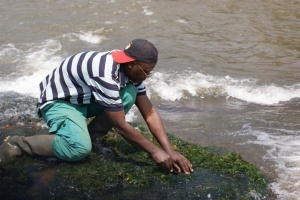
GC adheres to the objectives of CARLA (Central African Red List Authority). Some of its members belong to the executive committee of this authority, to the IUCN’s SSC (Species Survival Commission) and FBU (Freshwater Biodiversity Unit).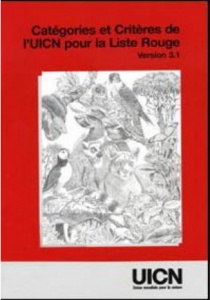 It therefore respects Target 2
It therefore respects Target 2
of Objective I of the GSPC, stipulating that is done “An assessment of the conservation status of all known plant species, as far as possible, to guide conservation action”. Some GC’s members have so far carried out important plant’s assessment and many others are in progress. GC is planning to encourage CARLA to organize more assessment meetings on the annual or biannual base. The Association will propose its support and expertise in this respect and is also planning to organize punctual training courses in the assessment of plant’s conservation status, especially how to use the IUCN guidelines. These training courses might be mostly directed towards the university students.
4. Conservation
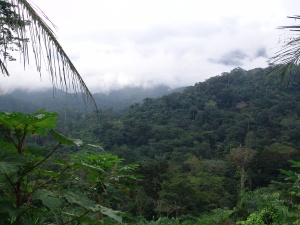
GC adheres to the CBD’s policy; and the objectives of the CBD are the conservation of biological diversity; the sustainable use of its components; and the fair and equitable sharing of benefits arising out of the utilization of genetic resources. Consequently, Objective II of the GSPC stipulates that “Plant diversity is urgently and effectively conserved“. Target 7 of this objective stipulate that “At least 75 per cent of known threatened plant species are conserved in situ” and Target 8 stipulates that are conserved “At least 75 per cent of 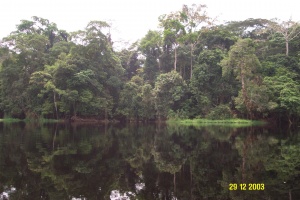 threatened plant species in ex situ collections, preferably in the country of origin, and at least 20 per cent available for recovery and restoration programmes”. Cameroon south of the Adamawa is shared between the wilderness area and the biodiversity hotspots (see in UNDP, 2004). This area hosts by far one of the most important plant diversity and endemism in tropical Africa (Linder, 2001). As for many parts of the continent and the world, the habitat loss and the biodiversity decline due to agriculture and overexploitation, is alarming. Therefore, even more than before, conservation in Cameroon is a topic up to date. In the frame of our conservation work, in the recent years, we have been restrictive in term of plant’s family. Henceforth, in front of the present alarming species’ extinction, GC is engaged to bring its expertise to the safeguard of all threatened plant species within Cameroon and where necessary and possible, in Tropical Africa. Concretely, we actively raise fund to realize conservation projects, to organize Conservation campaigns and advertisements, as well as plant inventories and monitoring etc.
threatened plant species in ex situ collections, preferably in the country of origin, and at least 20 per cent available for recovery and restoration programmes”. Cameroon south of the Adamawa is shared between the wilderness area and the biodiversity hotspots (see in UNDP, 2004). This area hosts by far one of the most important plant diversity and endemism in tropical Africa (Linder, 2001). As for many parts of the continent and the world, the habitat loss and the biodiversity decline due to agriculture and overexploitation, is alarming. Therefore, even more than before, conservation in Cameroon is a topic up to date. In the frame of our conservation work, in the recent years, we have been restrictive in term of plant’s family. Henceforth, in front of the present alarming species’ extinction, GC is engaged to bring its expertise to the safeguard of all threatened plant species within Cameroon and where necessary and possible, in Tropical Africa. Concretely, we actively raise fund to realize conservation projects, to organize Conservation campaigns and advertisements, as well as plant inventories and monitoring etc.

Devastated landscape at the two banks of the Nyong around Mbalmayo (seen from Nseng Nlong). Photo@Green connexion archives.
5. Education
Education is one of the most important activities of GC. In fact, Objective IV recommends the promotion of Education and awareness about plant diversity, its role in sustainable livelihoods and importance to all life on earth. In Target 14 of this objective, GSPC recommends the incorporation of the importance of plant diversity and the need for its conservation into communication, education and public awareness programmes. Our plan is that in the near future we seek for funding for supporting the professional training courses for students in the domain of biodiversity conservation and environmental protection; to organize educative discussions and seminars; to edit and publish educative posters and brochures; and to afford radio or TV educative programmes. All year round, through carefully sophisticated programs, GC will put its knowledge of the nature at the service of youth’s environmental education. Its objective is to arouse or to improve the child’s affective reaction towards the natural element.
6. Capacity building.
Capacity building is one of the first priorities for the GSPC’s implementation. In its Objective V, it recommends the development of the capacities and public engagement necessary to implement the strategy; and in its Target 15, it recommends sufficient number of trained people working with appropriate facilities, according to national needs to achieve the targets of the strategy. GC fully militates in favor of this objective. Our plan is to generally seek for solution for the GSPC’s implementation in Cameroon and in tropical Africa, but concretely, we will seek for funding for more environmental and social projects, in which it will be possible to train more people in the fundamentals of biodiversity’s Conservation as well as environment protection. For example, people will be trained on Ecotourism, Renewable energy techniques, forestry, craft, and food’s conservation etc.
7. Communication
GC is aware that all conservation initiative is directed towards the public, and believes that communication will be the first tool in this
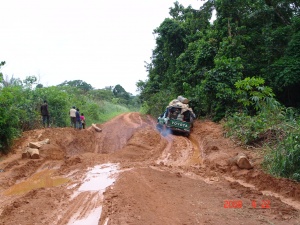
Conservation, a bit of courage and patience. Former Mamfé-Bamenda road. Photo@Green connexion archives
context. Objective IV of the GSPC recommends explicitly the promotion of Education and awareness about plant diversity, its role in sustainable livelihoods and importance to all life on earth, and in its Target 14, it recommends the incorporation of the importance of plant diversity and the need for its conservation into communication, education and public awareness programmes. GC has its own web page (www.greenconnexion-cm.org ) and e-mail address (info@greenconnexion-cm.org ). These will give it more opportunity to communicate with a large public, but will not be enough, as in rural area, internet is not part of the communication modes. Our plan for the near future will be to develop more adapted communication means, especially direct contact with local peoples and officials: Talk, Posters, radio or/and TV programmes, meetings, seminars etc.